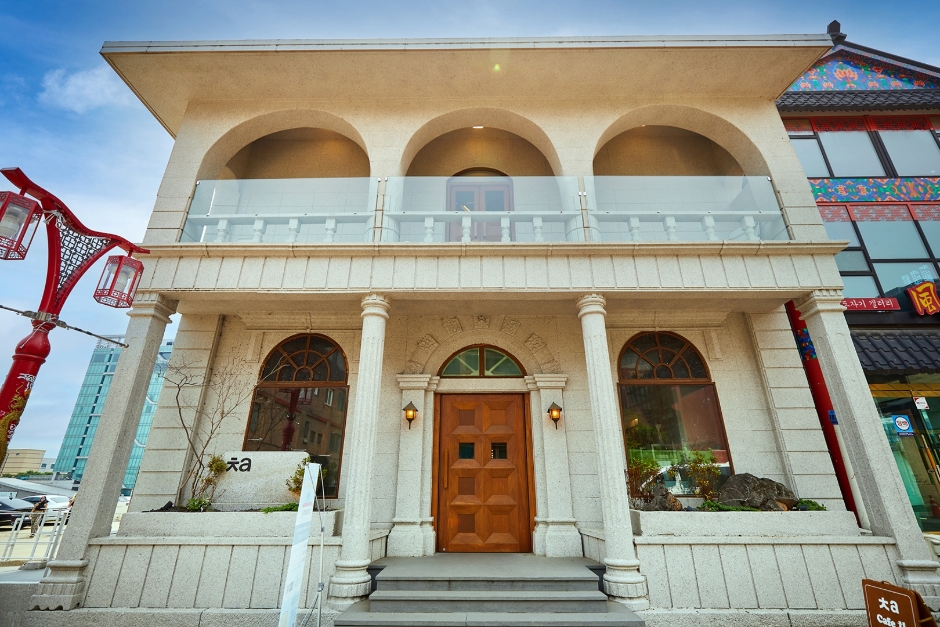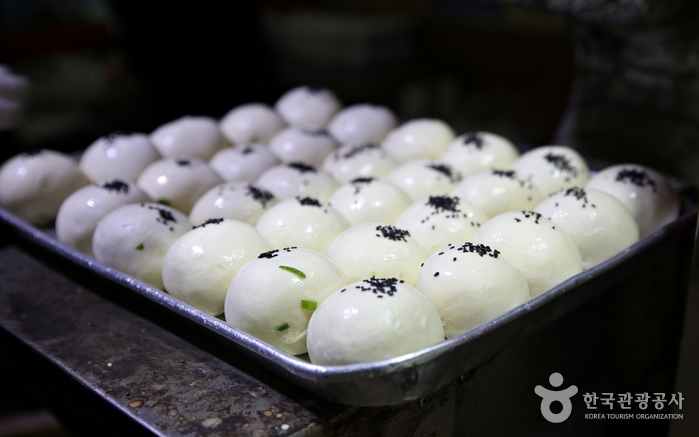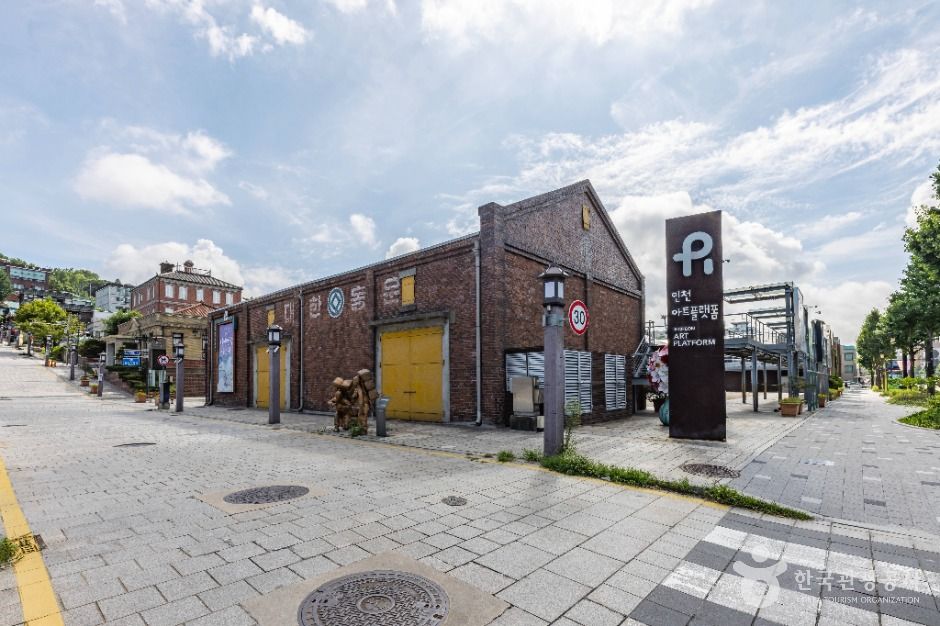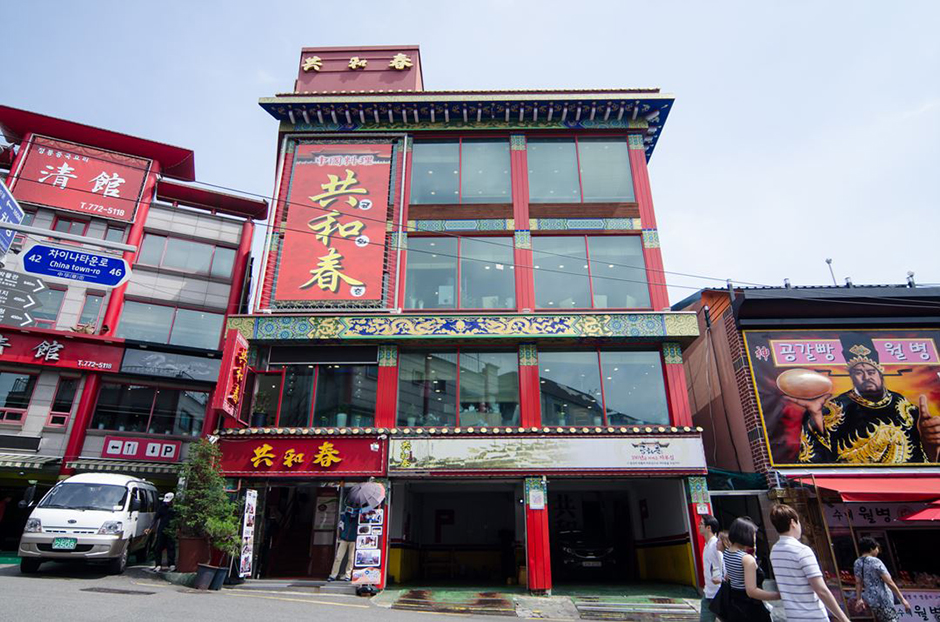Cafe Cha Chinatown Branch (카페 차 차이나타운점)
14.8Km 2024-01-04
20 Chinatown-ro 59beon-gil, Jung-gu, Incheon
This is the Chinatown branch of Cafe Cha, famous for its Dalgona Milk Tea in Seongsu-dong. In addition to the representative menu items, Dalgona Milk Tea and Dalgona Coffee, the café also offers signature blended teas with pretty names such as Dasichaeum (one more fill), Hyanggiroum (fragrant), Neogeureoum (merciful), and Singgeureoum (refreshing). It also has a variety of dessert menus, with the most popular dessert being Dalgona Butter Salt Bread. The café has a large parking lot, and customers can use it for 90 minutes free of charge.
Incheon Chinatown (인천 차이나타운)
14.8Km 2025-10-23
20 Chinatown-ro 59beon-gil, Jung-gu, Incheon
Incheon's Chinatown came into being with the opening of Incheon Port in 1883 and Incheon's designation as an extraterritoriality of the Ching dynasty in the following year. In the past, the area held many stores trading goods imported from China, but currently most Chinese businesses in the area are restaurants. Today, the residents of Chinatown are mostly 2nd or 3rd generation Chinese, descendents of the early Chinese settlers. The area harbors many of the flavors of China, while the traditional culture of the first generation is preserved.
Simnihyang (십리향)
14.9Km 2024-02-16
50-2 Chinatown-ro, Jung-gu, Incheon
Simnihyang is a Chinese restaurant in Incheon Chinatown, renowned for its specialty in hwadeok mandu (oven-baked mandu). The restaurant's name suggests that the aroma of its mandu spreads up to 10 Ri (approximately 4 km, pronounced 'simni' in Korean) away. Its signature dish, hwadeok mandu, consists of mandus filled with pork, vegetables, and seasoning, baked in an oven at temperatures above 350 degrees. This preparation ensures the mandu is crispy on the outside and juicy on the inside. Additionally, the restaurant offers various other fillings, including sweet potatoes, pumpkin, and red beans.
Cheongil Jogyeji Stairway (청일조계지 경계 계단)
14.9Km 2025-05-20
Seollin-dong, Jung-gu, Incheon
The border stairs of the Sino-Japanese Concession (an exclusive residential area set up for foreigners to live freely in ports opened for foreign trade) are located on a steep hill southwest of Jayu Park. It is a meaningful attraction with a history of about 120 years. The concession areas are divided into the Qing Dynasty concession on the left and the Japanese concession on the right with the stone stairs in the center. The buildings on the left and right clearly show each country's architectural styles and characteristics of the past.
Daebul Hotel Exhibition Hall (대불호텔전시관)
14.9Km 2025-10-23
101 Sinpo-ro 23beon-gil, Jung-gu, Incheon
This museum is located on the site of Daebul Hotel, Korea's first Western-style hotel, established in 1889. The hotel was demolished in 1978, but parts of the hotel structure were discovered in 2011 and rebuilt to preserve the hotel's original appearance. The first floor is the Daebul Hotel Exhibition Hall, through which visitors can see traces of Daebul Hotel at the time. The second floor is the Jung-gu Life History Museum, where visitors can get a glimpse of life in Incheon's Jung-gu area in the 1960s and 1970s.
Mandabok (만다복)
14.9Km 2024-12-19
인천광역시 중구 차이나타운로 36 만다복
This restaurant offers baengnyeon jjajang (meaning “hundred-year jjajang”), a traditional style of hayan jjajang, or old-fashioned black bean sauce noodles. The dish features noodles topped with a soy sauce-based sauce along with pork, seafood, and vegetables.
Diaspora Film Festival (제13회 디아스포라영화제)
14.9Km 2025-03-31
3 Jemullyang-ro 218beon-gil, Jung-gu, Incheon
+82-32-435-7172
Inspired from the how the Jews kept their cultural identity during the diaspora, the annual Diaspora Film Festival takes place in Incheon to shed light on the 1st generation Korean immigrants to Hawaii in 1902 from Incheon Port. In addition to highlighting the city's historical significance, the festival aims to stand against all kinds of prejudice and discrimination, advocate for minority groups, and support diversity and acceptance. It also focuses on a wide range of topics related to diaspora, exploring the social problems related to immigration and immigrants.
Incheon Art Platform (인천 아트플랫폼)
14.9Km 2025-10-23
3 Jemullyang-ro 218beon-gil, Jung-gu, Incheon
Incheon Art Platform, located in Haean-dong, Incheon, is known for its well-preserved architectural heritage and buildings that showcase a blend of traditional and modern architecture. The complex was established by remodeling structures built in the 1930s and 1940s. Centered around its residency program, it offers exhibitions, performances, and educational programs, and plays a significant role in promoting the free exchange of art and culture. By providing creative spaces for artists and venues for cultural exchange, the platform fosters interaction between artists and visitors.
Gonghwachun (공화춘)
14.9Km 2024-01-04
43 Chinatown-ro, Jung-gu, Incheon
Gonghwachun, one of the Chinese restaurants in Chinatown, opened in 1905 and is famous as the birthplace of jjajangmyeon. The original Gonghwachun building is currently used as Jjajangmyeon Museum, and the current Gonghwachun main branch operates in a building that was founded in 2004. Among the various menus, Gonghwachun Jjajangmyeon is a must-try. This signature menu serves the noodles and the black bean sauce separately. The sauce contains a various ingredients cut in large bite-sized pieces, making it even more delicious. It also offers various course menu options, including lunch, couple, and family courses.
Incheon Open Port Museum (인천개항박물관)
15.0Km 2025-10-23
89 Sinpo-ro 23beon-gil, Jung-gu, Incheon
Designated as a Tangible Cultural Heritage of Incheon Metropolitan City, the Incheon Open Port Museum is housed in the former Bank of Japan building, an architectural masterpiece constructed in the late Renaissance style. With four permanent exhibitions, the museum offers a glimpse into various aspects of modern culture and artifacts that were first introduced after the opening of Incheon Port. (Credit: Incheon Jung-gu Cultural Foundation)










 English
English
 한국어
한국어 日本語
日本語 中文(简体)
中文(简体) Deutsch
Deutsch Français
Français Español
Español Русский
Русский